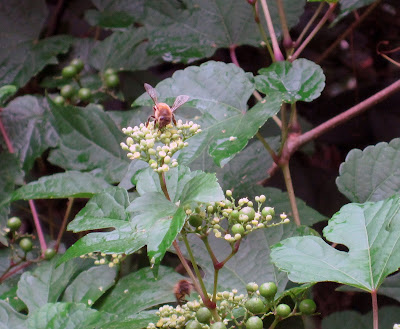 Faithful readers of this blog probably already know what a pyramidium is. An obelisk-damaging earthquake, a big hurricane, and freshman orientation at Wake Forest seem a little too much for one week in August!
Faithful readers of this blog probably already know what a pyramidium is. An obelisk-damaging earthquake, a big hurricane, and freshman orientation at Wake Forest seem a little too much for one week in August!
Friday, August 26, 2011
Cracks in the pyramidium
 Faithful readers of this blog probably already know what a pyramidium is. An obelisk-damaging earthquake, a big hurricane, and freshman orientation at Wake Forest seem a little too much for one week in August!
Faithful readers of this blog probably already know what a pyramidium is. An obelisk-damaging earthquake, a big hurricane, and freshman orientation at Wake Forest seem a little too much for one week in August!
Thursday, August 25, 2011
Tasteful and cheaper!
 From the very, very helpful website of The Association for Gravestone Studies:
From the very, very helpful website of The Association for Gravestone Studies:
"The obelisk is, to quote McDowell and Meyer in The Revival Styles in American Memorial Art, one of the "most pervasive of all the revival forms" of cemetery art. There is hardly a cemetery founded in the 1840s and 50s without some form of Egyptian influence in the public buildings, gates, tomb art, etc. Napoleon's 1798-99 Egyptian campaigns, the discoveries at the tombs of the Pharaohs, and our new Republic's need to borrow the best of the ancient cultures (Greek revival, classic revival, the prominence of classical studies and dress, etc.) led to a resurgence of interest in the ancient Egyptian culture. Obelisks were considered to be tasteful, with pure uplifting lines, associated with ancient greatness, patriotic, able to be used in relatively small spaces, and, perhaps most importantly, obelisks were less costly than large and elaborate sculpted monuments. "
Photograph taken by Susan in the 1851 South Easton Cemetery. More obelisks tomorrow!
Wednesday, August 24, 2011
Stonehill College
Tuesday, August 23, 2011
Monday, August 22, 2011
All New England cemeteries...
 ...are trying to look like this.
...are trying to look like this.
(Susan photographed the 1801 Seth Pratt Cemetery in South Easton, Massachussets, when she should have been making sure her Gordon Research Conference was running smoothly.)
Sunday, August 21, 2011
The wild grapes of North Carolina

 It has always saddened the blog that apiculture and viticulture are unrelated endeavors, as cultivated grapes do not require pollination. But there is an exception to this rule. The wild grapes of the southeastern United States - the muscadines - are dependent upon insect pollinators for setting their fruit. And, because the blog has been so busy this summer that it had to let its garden go natural, the bees are busy on the vines. The name muscadine was given by the early settlers of North Carolina, who were reminded of the French muscat grape by the sweet musk scent of these wild grapes. The first wines ever produced in the United States were likely made from muscadine grapes!
It has always saddened the blog that apiculture and viticulture are unrelated endeavors, as cultivated grapes do not require pollination. But there is an exception to this rule. The wild grapes of the southeastern United States - the muscadines - are dependent upon insect pollinators for setting their fruit. And, because the blog has been so busy this summer that it had to let its garden go natural, the bees are busy on the vines. The name muscadine was given by the early settlers of North Carolina, who were reminded of the French muscat grape by the sweet musk scent of these wild grapes. The first wines ever produced in the United States were likely made from muscadine grapes!
Wednesday, August 3, 2011
Monday, August 1, 2011
Contrary to the impression left by the U.S. House of Representatives...
Subscribe to:
Posts (Atom)










